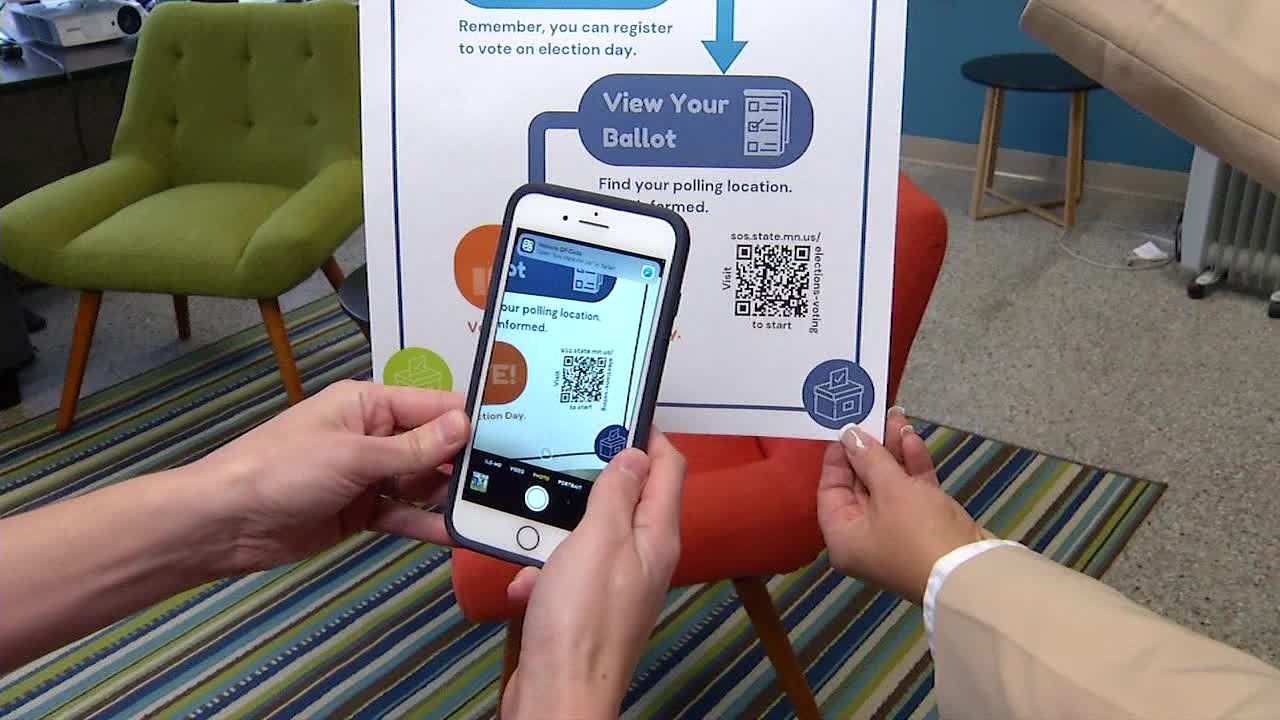Healthcare professionals help increase voter registration through outreach
More than 450,000 absentee ballots have been accepted so far in Minnesota with less than a week until Election Day. Doctors, nurses and other healthcare staff are helping provide a pathway to the polls through an initiative to increase voter registration.
At the MyHealth for Teens and Young Adults clinic in Hopkins, patients learn how to take care of their health and their community. Director Connie Robertson shared materials they use to talk to youth about voting.
“This kind of walks through ‘What is my voting residence?’,” she explained, pointing to a fact sheet for college students. “And if you have to vote early with an absentee ballot, how do you go about doing that?”
A QR code on the sheet connects students to the Minnesota Secretary of State’s website, which shares additional information about registering to vote and polling locations.
Posters in exam rooms and throughout the clinic also provide quick access to information through a QR code.

“Not everyone who comes into the clinic will see a nurse, or a doctor, or a therapist because some of them might just be a friend hanging out in the lobby to support someone,” said Robertson. “If they see that sign in the lobby when they’re sitting and waiting, […] they could register to vote.”
The clinic provides medical care and mental health care for youth, regardless of their insurance status. Their mission is to reduce barriers to care and, in this case, voting as well.
“We see a lot of young adults that feel helpless, they struggle with depression, anxiety, they don’t feel like they have control over their lives and this is a way to give them some control, give them some power,” said Robertson. “We definitely in no way lead people down a path where they have to vote one way or another- that is their choice. We just give them the resources and the tools so they can make informed decisions on their values and beliefs.”
Their materials evolved from a program MyHealth participated in last year called Vot-ER, which is a national initiative to increase voter participation.
An emergency room physician started a pilot program at Massachusetts General Hospital in 2019, after he saw a correlation between areas of low voter turnout and worse health outcomes. Vot-ER has now grown to reach more than 500 hospitals, centers and clinics nationwide.
The nonpartisan organization provides badges and other materials to healthcare professionals, which can be used to help patients register to vote.
“There’s a QR code on the back and you just scan that and it brings you to the Vot-ER website, which ties you into whichever state you’re in” explained Dr. Sakina Naqvi, a pulmonary and critical care physician for M Health Fairview.
The Vot-ER website connects patients with information about what’s on their ballot, polling place location, and how to register to vote. It also provides suggestions for how healthcare providers can approach those conversations with their patient.
Dr. Naqvi explained she speaks to patients about their voter registration status as they go through a series of health maintenance questions, including immunization and housing status.
“It’s easier to have the conversation with patients that you’ve had longer term relationships with,” said Dr. Naqvi. “Some patients are just surprised we’re having this conversation, some people are really excited we’re talking about it and some people find it irrelevant.”
She estimates she’s helped roughly 15 people register to vote since M Health Fairview started participating two years ago. About a dozen Minnesota clinics and systems have participated in Vot-ER since it launched.
Vot-ER has helped more than 66,000 people register or sign up for mail-in ballots since 2020 nationwide, according to a spokesperson.
“Civic engagement has a direct impact on social determinants of health, which is housing, food insecurity,” said Dr. Naqvi, who said the pandemic emphasized the role of healthcare in political discourse. “I think it’s been made much more obvious. There’s been a lot of disparities in outcomes with people who are of lower socio-economic status. Uninsured and underinsured people had worse outcomes and I think that’s really brought it to the forefront the need to be engaged in their local communities.”
Robertson sees a clear health benefit of voting among the patients they treat at the MyHealth clinic.
“They all of a sudden have a sense of I can make a difference, my thoughts, my voice matters,” she said.
For more information about Vot-ER, click here.
For more information about MyHealth for Teens and Young Adults, click here.